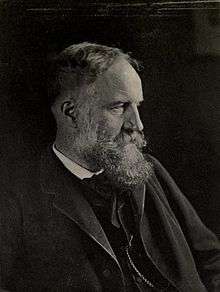Philip Gilbert Hamerton

Philip Gilbert Hamerton (10 September 1834 – 4 November 1894), was an English artist, art critic and author.
Early life
Philip Hamerton was born at Laneside, a hamlet near Shaw and Crompton, Lancashire, England. His mother died giving birth to him, and his father died ten years later. When he was about five, he was sent to live with his two aunts at an estate called the Hollins[1] on the edge of Burnley, where he attended Burnley Grammar School.[2]
Career
Hamerton's first literary attempt, a volume of poems, was unsuccessful, leading him to devote himself for a time entirely to landscape painting; he camped out in the Scottish Highlands, where he eventually rented the former island of Inistrynich in Loch Awe, upon which he settled with his wife Eugénie Gindriez, the daughter of a French republican magistrate, in 1858.
Discovering after a time that he was more suited to art criticism than painting, he moved to his wife's native area in France, where he produced his Painter's Camp in the Highlands (1863), which was very successful and prepared the way for his standard work on Etching and Etchers (1866). In the following year he published Contemporary French Painters, and in 1868 a continuation, Painting in France after the Decline of Classicism.
He had by now become art critic to the Saturday Review, which necessitated frequent visits to England, forcing him to give it up. He proceeded (1870) to establish an art journal of his own, The Portfolio, a monthly periodical, each number of which consisted of a monograph upon some artist or group of artists, frequently written and always edited by him. The discontinuation of his painting gave him time for writing, and he successively produced The Intellectual Life (1873), perhaps the best known and most valuable of his writings; Round my House (1876), notes on French society by a resident; and Modern Frenchmen (1879), admirable short biographies. He also wrote two novels, Wenderholme (1870) and Marmorne (1878).
In 1884 Human Intercourse, another volume of essays, was published, and shortly afterwards Hamerton began his autobiography, which he brought down to 1858. In 1882 he issued a finely illustrated work on the technique of the great masters of various arts, under the title of The Graphic Arts, and three years later another splendidly illustrated volume, Landscape, which traces the influence of landscape upon the mind of man. His last books were: Portfolio Papers (1889) and French and English (1889). In 1891 he removed to the neighbourhood of Paris, where he died suddenly in Boulogne-sur-Mer, occupied to the last with his labours on The Portfolio and other writings on art.
In 1896 was published Philip Gilbert Hamerton: an Autobiography, 1834–1858; and a Memoir by his wife, 1858–1894.
Notes
- ↑ Jack Nadin's Burnley history site Accessed 2010
- ↑ Hamerton, Philip Gilbert (1897). Philip Gilbert Hamerton, an Autobiography. London: Seeley & Co., p. 20.
References
 This article incorporates text from a publication now in the public domain: Chisholm, Hugh, ed. (1911). "Hamerton, Philip Gilbert". Encyclopædia Britannica (11th ed.). Cambridge University Press.
This article incorporates text from a publication now in the public domain: Chisholm, Hugh, ed. (1911). "Hamerton, Philip Gilbert". Encyclopædia Britannica (11th ed.). Cambridge University Press.
External links
-
 Works written by or about Philip Gilbert Hamerton at Wikisource
Works written by or about Philip Gilbert Hamerton at Wikisource - Works by Philip Gilbert Hamerton at Project Gutenberg
- Works by or about Philip Gilbert Hamerton at Internet Archive